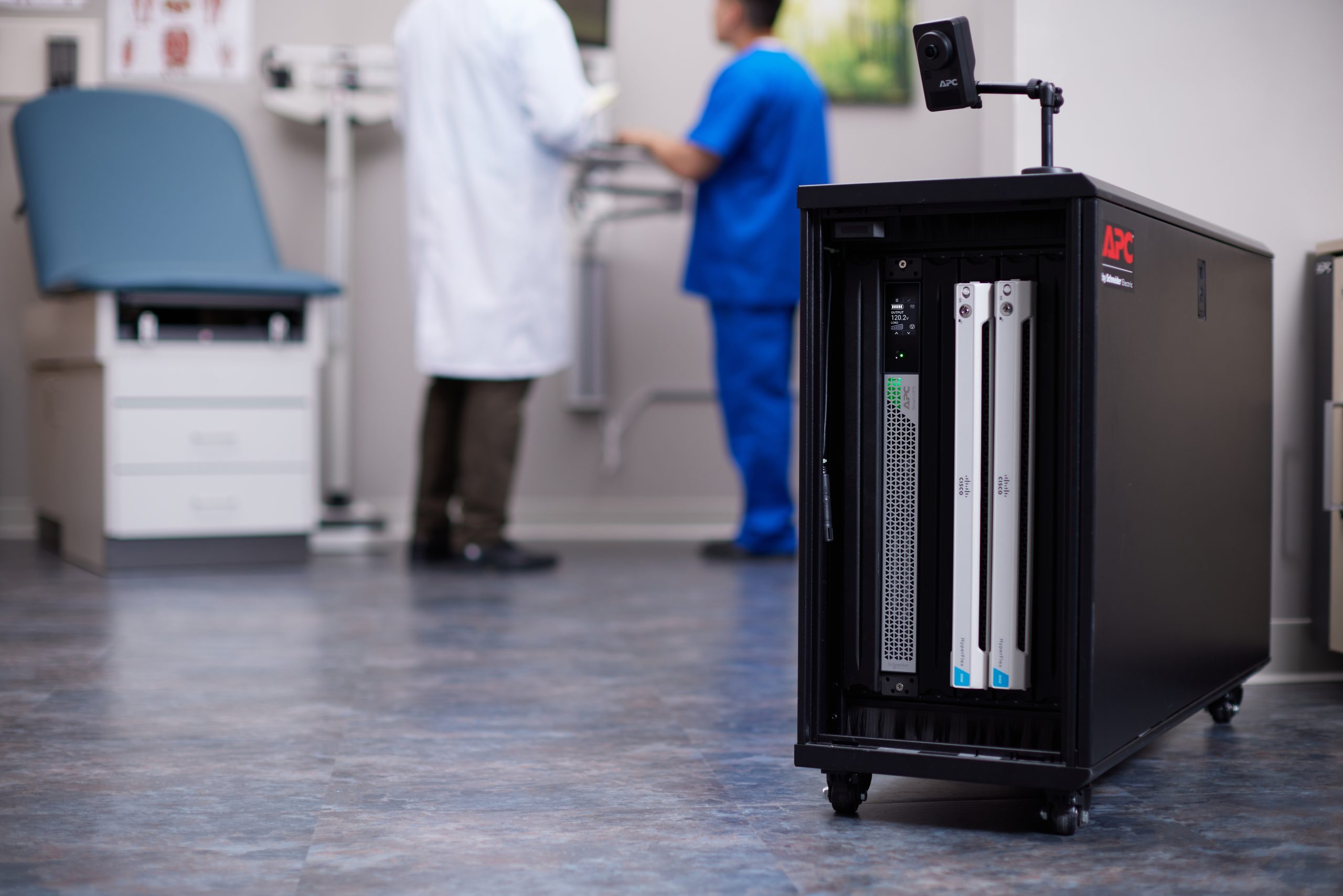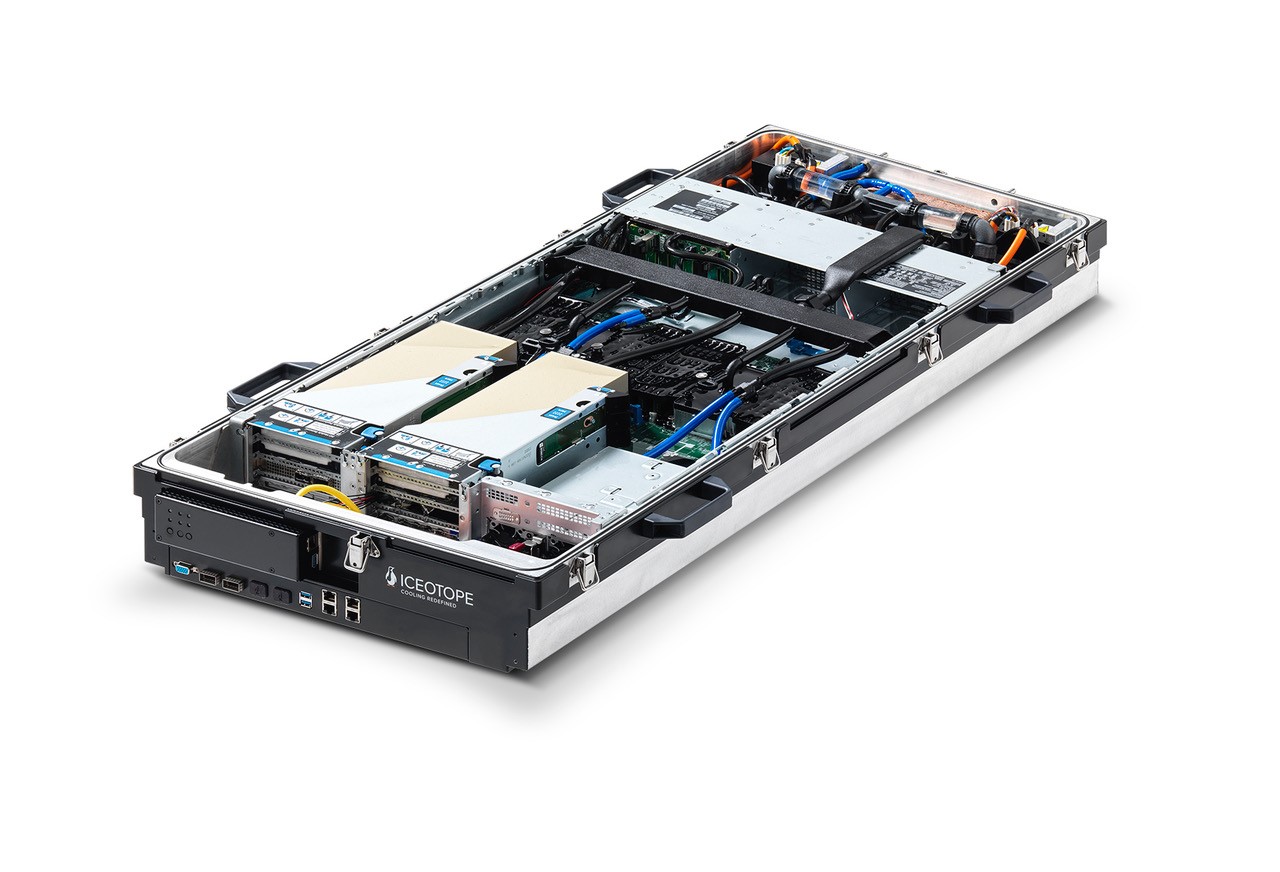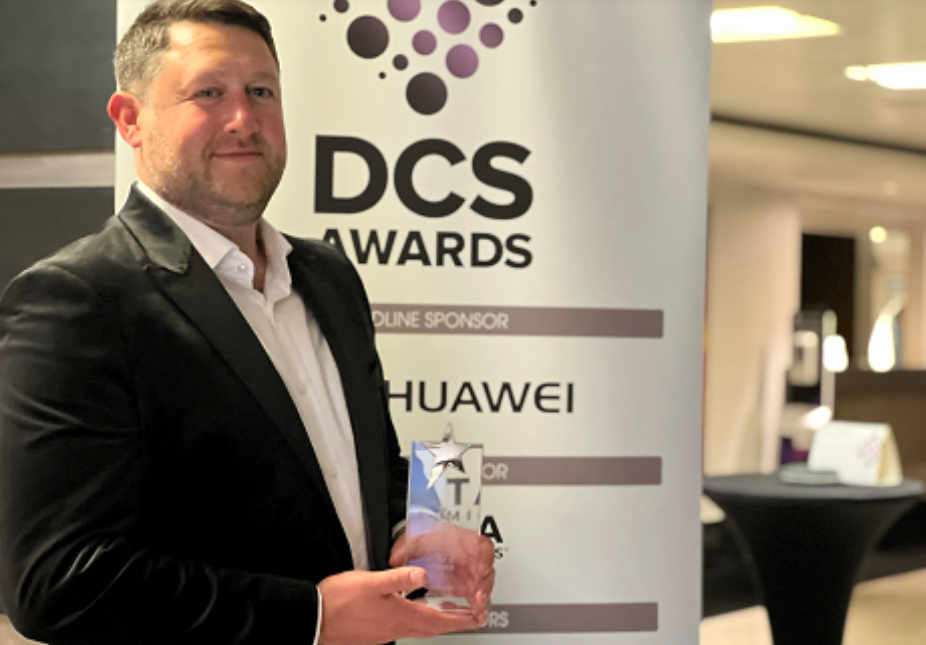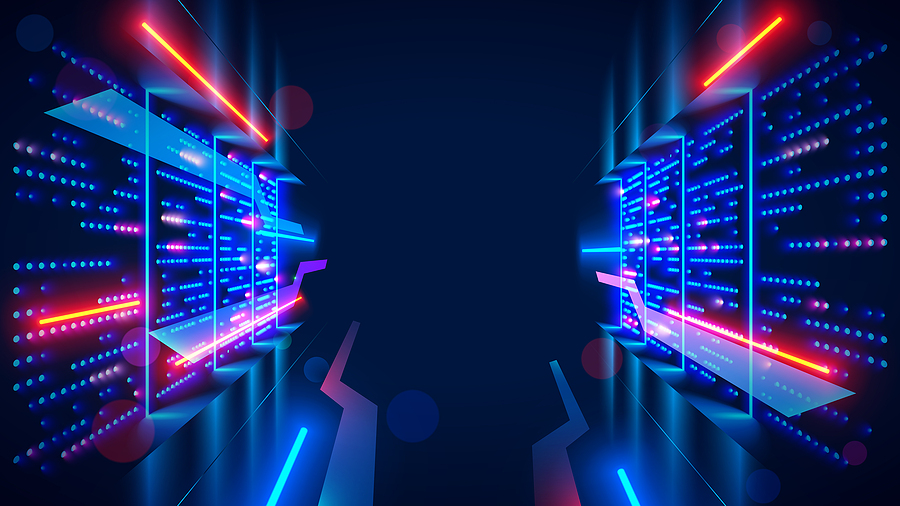Edge Computing in Modern Data Centre Operations
Data Centre Operations: Optimising Infrastructure for Performance and Reliability
Data Centres
Edge Computing in Modern Data Centre Operations
nLighten launches edge data centre platform in Germany
nLighten has announced that its edge data centres will begin operations in Germany this year. With 10 strategic locations in Berlin, Düsseldorf, Frankfurt, Hamburg, Hannover, Cologne, Leipzig, Munich, Nuremberg and Stuttgart, customers will have access to a human-size, low latency data centre platform with strategic proximity to their end-users. nLighten’s select locations are well matched to Germany’s distributed economy, with a local presence in key economic zones and aim to provide users within the region with a latency of 2-6ms.
This advanced edge data centre platform is a step forward offering for companies wanting to place compute, content or applications closer to their users. I Squared has committed more than $500 million of equity to support nLighten’s growth plans across Europe to deliver solutions for both existing and emerging low-latency applications.
"We are very excited to provide our services in Germany," says Harro Beusker, CEO and Co-Founder of nLighten. “We believe that Germany is one of the best places to launch our edge data centre platform with presence in all key economic hubs. From here we will expand into several other European markets.”
The nLighten infrastructure model collaborates with the utility sector to support emissions reduction through grid stabilisation and the recovery and export of heat to the community. This creates a new virtuous cycle between increasing data consumption and environmental sustainability.
"The motivation to create nLighten came from our desire to make data centres local, to provide for evolving data use and environmental functions in the community,” says Chad McCarthy, CTO and Co-Founder of nLighten.
Target markets and ecosystem
nLighten serves companies that require a nearby data centre, or multiple locations across Germany. nLighten creates direct links between customers and service providers, enabling a scalable open digital marketplace running on its infrastructure. This offers enterprises and business partners an extensive ecosystem of carrier-neutral and supplier-agnostic solutions including B2B connectivity, content delivery, networks and cloud services.
The company works closely with industry partners, like telcos, cloud providers and system integrators, who advise nLighten customers and offer their services in the data centres. nLighten data centres are both digital and physical marketplaces, providing modern, comfortable office and meeting facilities.
Beatrice - 9 February 2023
Data Centre Operations: Optimising Infrastructure for Performance and Reliability
Edge Computing in Modern Data Centre Operations
Edge computing key for rapid adoption of Industry 4.0
As the world recovers from the COVID-19 pandemic, the global IoT market is anticipated to surpass $1 trillion in 2024 in revenue - where enterprise IoT could account for over 70% of the market share. Against the backdrop, edge computing holds a promise to dramatically improve data processing for mission-critical applications and accelerate the adoption of Industry 4.0, says GlobalData.
Kiran Raj, Practice Head of Disruptive Tech at GlobalData, comments, “Edge computing technology is the missing link of IoT, as it processes data at the network edge instead of sending it back to the cloud or a data centre, thus reducing the latency issue for businesses related to their internet and networking infrastructure impacted by the growing number of devices and data.”
Abhishek Paul Choudhury, Senior Disruptive Tech Analyst at GlobalData, comments, “When augmented with artificial intelligence (AI) and 5G capabilities, edge computing can provide an effective and efficient means to analyse data in real-time with minimum network latency and server failures. This can help businesses with enhanced privacy, security, scalability, and resiliency.”
GlobalData’s innovation radar report, ‘Scaling at the edge: how edge computing is augmenting data processing,’ highlights how edge computing is improving data processing in various sectors across the technology’s value chain.
Device edge
California’s technology startup Wistron AiEdge (Wistron) has created an artificial intelligence of things (AIoT) and data-driven fleet management platform, ZigFleet, that enables managers to efficiently monitor and manage fleets. It also helps reduce auto accidents, mentors inexperienced drivers in new areas, and optimises fleet routes. This can offer businesses optimum productivity and profitability, while being more environmentally friendly in terms of energy use and carbon emissions.
Remote edge
Israel-based telecom access solutions company, RAD, has developed an industrial internet of things (IIoT) gateway, SecFlow, for remote end-to-end (E2E) asset monitoring. SecFlow’s edge computing capabilities enable local data processing by assets with numerous sensors instead of using a centralised control system. This allows flexibility in functioning while reducing equipment costs and space requirements.
Telco/MEC edge
Dubai Integrated Economic Zones Authority (DIEZ) collaborated with the UAE’s telecom giant ‘du’ and US-based software development startup Derq, to develop smart city solutions. They aim to collect and combine data from IoT traffic cameras and sensors to execute real-time edge analytics while enabling infrastructure perception. This can enable vehicle-to-everything (V2X) or 5G applications, actionable traffic, and safety insights to build effective urban organisations and systems that can enhance the quality of life.
Paul concludes, “Edge computing is set to disrupt many sectors in the Industry 4.0 era with its cutting-edge capabilities. It is safe to assume that the technology will aid in the better management and analysis of data while significantly increasing the value of IoT efforts. Subsequently, more use cases will emerge as the technology matures further.”
Beatrice - 9 January 2023
Data Centre Operations: Optimising Infrastructure for Performance and Reliability
Edge Computing in Modern Data Centre Operations
Infrastructure Management for Modern Data Centres
News in Cloud Computing & Data Storage
Edge ecosystems, 5G and hybrid cloud to drive change in 2023
If data is the fuel powering the global economy, then data centres are the backbone on which it sits. Despite economic slowdowns, the upward trend in cloud infrastructure and mobile connectivity has continued. With latency expectations increasing, the distance that data travels has also never been more critical. Looking ahead to 2023, Pulsant, has identified its six predictions for the rapidly changing world of infrastructure.
Ecosystems will power UK business to the edge
As the year progresses, organisations engaged in major projects such as smart cities or industrial IoT implementations will seek out ecosystems over a single-vendor approach. Their dependence on data means these projects will require edge computing for advances such as intelligent, interactive transport system, remote, AI powered live video analysis, or highly automated, complex manufacturing.
In each case, organisations will want access to more than just a data centre. They will want edge expertise and an ecosystem of companies with specialist understanding of use cases and specific types of connectivity and backhaul. And they will want to avoid being totally reliant on a single vendor. More than one view and multiple options are necessary so organisations can maximise performance and resilience while keeping a lid on cost. Mobile edge computing ecosystems, for example, will facilitate faster and more flexible deployment of location-based services, along with content delivery applications.
Connectivity will be about more than a mast
2023 will be the year when connectivity comes more sharply into focus. In the EY survey of UK businesses, 43% admit they struggle to understand how 5G connectivity relates to emerging technologies such as edge computing. This is worse than the global average of 39%. Yet 5G will continue to grow in the UK.
Applications focused on real-time and aggregated data analytics need connectivity that has either low jitter, loss and lag or has dedicated high bandwidth. The telcos have been first movers in this market with 5G, but carrier fibre delivers waves that are more dependable.
MECs (multi-access edge computing environments) provide IT services, compute and cloud access but this will soon give way to sliced radio networks or shared services at the metropolitan level. There are already live use cases in the transport and energy sectors, but large-scale adoption will follow once edge infrastructure platforms have fully developed their low latency connectivity, high-speed backhaul to the public cloud and local computing capabilities.
Businesses looking to implement these technologies will want to benefit from direct connectivity to the world’s top cloud-providers at the same time as processing data locally to achieve the right level of latency and cost-optimisation. Organisations will seek simplicity in cloud connectivity partnerships, to avoid the complexity of using different exchanges and third party networks.
Regional data centres will hog more of the limelight
Regional data centres will continue their significant growth. ResearchAndMarkets this year said regional data centres outside the M25 and Slough are adding 20,000m2 annually, with overall data centre revenue growth will be 36% up to 2025.
The drivers behind these figures include the global explosion of SaaS applications and the demand for edge infrastructure. Increasing numbers of regional businesses want low latency, high-bandwidth connectivity so they can implement AI technologies and reap the benefit of SaaS applications. SaaS companies want to deliver those applications from edge data centres.
For most of the UK, this is only possible from data centres strategically sited in the regions. A route-diverse network of edge data centres connected by high-speed fibre with backhaul to all the hyperscaler hubs will become increasingly essential.
The development of UK-wide edge computing platforms will continue to shift the way businesses operate and will improve the quality of life for millions of people living outside the main metropolitan areas. It’s already starting to transform content delivery, virtual reality, real-time advertising, and even remote healthcare.
Streaming will continue to outrun smart cars for now
Smart vehicles are an exciting and massive use case for edge computing, but 2023 is unlikely to be their break-out year. For the foreseeable future, the explosion of video streaming services will outrun smart vehicles. Autonomous vehicles are expected to account for only about 12% of registrations by 2030.
The video streaming market, by contrast, could grow by more than 20% between now and 2030, thanks to the ability of edge computing infrastructure to support data-intensive content delivery and high levels of personalisation through AI.
But as the development of smart cars continues, edge computing will be at the centre of collaborations between the designers and implementers of the many technologies and systems required. Edge data centres will process and filter the masses of data smart cars and their infrastructure generate and depend on.
UK business gets the tools to make hybrid cloud kick
Hybrid cloud is going to grow even faster in 2023. The global hybrid cloud market was valued at $85 billion in 2021 and Statista forecasts it to grow to $262 billion in 2027. Hybrid architectures can be notoriously complex and costly to operate, but the advent of next-generation cloud management platforms is removing many of these drawbacks.
Organisations choosing a hybrid cloud architecture combine the best of the public or private clouds and on-premises data centres. They can benefit from greater cost-control, faster application-deployment, and the ability to manage all their workloads centrally while extending advanced orchestration capabilities all the way to the edge. With the new toolsets they can manage all their environments from a single interface and gain a full understanding of performance. Instead of watching costs rack up with no gain in performance, this is a year when more organisations will switch between environments according to their own requirements - not the cloud provider’s.
Massive data processing needs to de-couple from climate and ecological harms
The COP27 climate change conference in Egypt heard that data science will play a major role in helping reduce carbon emissions yet the data centres that process all that information will remain under heavy pressure to reduce energy consumption and move to renewables.
Having authentic green credentials is likely to make a significant difference for data centre networks as 2023 unfolds. Potential customers will be looking for adoption of valid emissions-reductions frameworks such as the Science Based Targets initiatives’ Net Zero Standard. This is the kind of robust and credible approach that enterprises will want to see so they are not accused of ignoring the need to reduce greenhouse gas emissions.
Data centre operators will be under intense scrutiny, needing to demonstrate they are using valid reporting methodologies that cover everything from facilities to vehicles and the energy they purchase. Data centres demonstrating high levels of renewable energy will clearly be at a major advantage, yet there may well be a push for more information about upstream and downstream climate effects. Data centre operators will need to continue to develop their understanding of these effects to ensure responsible and informed choices.
Beatrice - 5 December 2022
Data Centre Operations: Optimising Infrastructure for Performance and Reliability
Edge Computing in Modern Data Centre Operations
Schneider Electric introduces APC Smart-UPS Ultra
Schneider Electric has introduced the APC Smart-UPS Ultra, 3kW and 5kW 1U single-phase UPS. Designed to deliver more power, flexibility, and intelligent monitoring in the smallest footprint, the APC Smart-UPS Ultra enables IT professionals and solution providers to address many of the challenges with deploying IT infrastructure in distributed edge computing environments.
The global edge computing market is facing massive growth, growing at 12.5% annually to an estimated $250.6 billion in 2024, according to IDC. The proliferation of digital technologies and smart applications is driving the need for compute, network, and storage resources that are localised and in close proximity to enable business critical processes and experiences that rely on network connectivity to the cloud. Yet, configuring, deploying, and maintaining the supporting IT infrastructure for multiple, geographically dispersed sites comes with unique challenges.
With the APC Smart-UPS Ultra, Schneider Electric is bringing to market its smallest, most advanced single-phase UPS that provides the flexibility to install anywhere and save on total cost of ownership (TCO) without compromising businesses’ power protection needs.
“To meet the digital demands of the future, local, regional and cloud data centres must be designed to be sustainable, resilient, efficient and adaptable. Schneider Electric continues to innovate and respond to customer needs with the introduction of the APC Smart-UPS Ultra,” says Tarunjeet Sarao, Senior Vice President, Transactional and Edge Line of Business at Schneider Electric. “The first of its kind, APC Smart-UPS Ultra is redefining the single-phase UPS, making it lighter and more powerful with the next generation semiconductor technology. In addition, it uses lithium-ion technology to power distributed IT and edge computing sites to ensure our digital life is on.”
APC Smart-UPS delivers more power in less space
In distributed IT and edge environments there are often significant physical space considerations, with a premium placed on maximising square footage and operating the space efficiently to optimise IT systems and improve the bottom line.
The APC Smart-UPS Ultra’s compact design delivers more power while taking up less IT space, providing the installation flexibility and power density you need for today and into the future. The UPS’s compact design is up to 50% smaller and lighter than comparable UPS solutions on the market today. The APC Smart-UPS Ultra offers flexible mounting options including rack, tower or wall/ceiling mounts, so it can be placed out of the way to allow for more space for IT in the rack.
Lithium-ion battery offers lower TCO over 10 years, reducing site visits
Effective power management is critical for any IT environment, but regular and effective maintenance of power protection equipment such as UPSs, especially across multiple distributed sites, can require costly ongoing OpEx investment.
The APC Smart-UPS Ultra’s Lithium-ion battery lasts up to three times longer than a traditional valve regulated lead acid (VRLA) powered UPS and will not need to be replaced under normal operating conditions. This helps to eliminate costly battery replacement, labour and service fees and visits over the life of the UPS. The APC Smart-UPS Ultra saves on TCO over 10 years and comes with a five-year warranty.
EcoStruxure Ready APC Smart-UPS Ultra ensures better visibility anytime, anywhere
Being understaffed or lacking onsite staff makes management, maintenance and service activities such as inspecting equipment, replacing batteries, swapping out failed equipment very burdensome, particularly if assets are highly distributed and geographically dispersed. APC Smart-UPS Ultra is EcoStruxure Ready which allows cloud-based monitoring, delivers data-driven recommendations to optimise performance, and enables wherever-you-go visibility across multiple UPS devices. Connectivity is available via Ethernet Port or embedded network port, and the EcoStruxure Ready APC Smart-UPS web portal provides automated, customisable alerts regarding the health of the UPS to make preventative maintenance simpler in order to reduce downtime and lower mean time to repair.
Beatrice - 17 November 2022
Data Centre Operations: Optimising Infrastructure for Performance and Reliability
Data Centre Security: Protecting Infrastructure from Physical and Cyber Threats
Edge Computing in Modern Data Centre Operations
News
Secureworks partners with Netskope and SCADAfence
Secureworks has announced the expansion of its alliances program into several new solution areas. With threats expanding into critical production environments and the service edge, detection capabilities must expand, too. Through two new partners, Netskope and SCADAfence, Secureworks widens the range of potential security vulnerabilities addressed by Secureworks Taegis XDR to include Secure Access Service Edge (SASE), Operational Technology (OT), and Industrial Control Systems (ICS). Now, more organisations than ever can benefit from better detection with increased value.
By announcing new and fast-developing partnerships with two technology partners across new alliance domains, Secureworks is continuing to focus on Secureworks Taegis as a unifying XDR platform. Taegis is easily integrated with customers through continuously growing open technology and broad integration capabilities that provide detection and a fast response without vendor lock-in.
“We’re bringing together the best of breed detection and response capabilities across domains where we see the threat landscape most exposed to adversary attacks,” says Chris Bell, Vice President of Strategy, Corporate Development and Strategic Alliances at Secureworks. “As part of our mission to help secure human progress, we will continue to forge new alliances that can deliver technology innovation while incorporating new threat intelligence into the methods and intentions of the adversary.”
As a leader in the Secure Access Service Edge (SASE) framework for converged networking and security, Netskope has pioneered a unique approach for protecting data and people across devices and applications, inside and outside the traditional company network. Integration between Netskope and Secureworks will enable customers to perform all investigations and apply detectors using Secureworks Taegis for a more holistic view of threats and business risks - widening the aperture of cyber environments all the way to the edge.
“Hybrid work is the new normal, and our customers look for complete SASE solutions to enable performance, deliver data, protect against threats, and maximise return-on-investment,” says Andy Horwitz, VP of Business Development at Netskope. “We are pleased to partner with Secureworks to provide visibility and control over threats and continuously manage risk across the whole of the hybrid work environment, from cloud applications to IoT devices.”
The partnership with SCADAfence will see Secureworks expand its Taegis platform into operational technology (OT) and ICS through SCADAfence integration.
In partnership with SCADAfence, Secureworks expands Taegis XDR into the Industrial environment, bringing intelligence from OT into a unified view with all other security telemetry across the IT landscape. SCADAfence extends industry leading insights, awareness, and asset discovery to a truly open XDR platform giving security analysts greater context around the threats they are investigating.
"The opportunity for a truly open XDR platform to integrate with the leading OT platform in SCADAfence provides the potential for organisations to streamline a security analyst workload by providing context and enrichment from events occurring across the entire IT and OT landscape, while enabling longer-term data retention with the combined data set," comments Paul Smith, Field CTO of SCADAfence. "This partnership with Secureworks will allow our joint customers to use a truly integrated OT plus XDR offering.”
www.secureworks.com
www.netskope.com
www.scadafence.com
Beatrice - 31 August 2022
Data Centre Operations: Optimising Infrastructure for Performance and Reliability
Data Centres
Edge Computing in Modern Data Centre Operations
News
Iceotope cuts power for edge and data centre compute requirements
Iceotope has announced that its chassis-level cooling system is being demonstrated in the Intel Booth at HPE Discover 2022, the prestigious ‘Edge-to-cloud Conference’. Ku:l data centre is the product of a close collaboration between Iceotope, Intel and HPE and promises a faster path to net zero operations by reducing edge and data centre energy use by nearly a third.
Once the sole preserve of arcane, high performance computing applications, liquid cooling is increasingly seen as essential technology for reliable and efficient operations of any IT load in any location. There is a pressing concern about sustainability impacts as distributed edge computing environments proliferate to meet the demand for data processing nearer the point of use, as well as growing facility power and cooling consumption driven by AI augmentation and hotter chips.
Working together with Intel and HPE, Iceotope benchmarked the power consumption of a sample IT installation being cooled respectively using air and precision immersion liquid cooling. The results show a substantial advantage in favour of liquid cooling, reducing overall power use across IT and cooling infrastructure.
Putting Ku:l data centre to the test
To understand the operational advantages of Iceotope’s Precision Immersion Cooling system, Ku:l data centre was compared to a traditional air-cooled system using a 19.6kW load comprising 16x HPE ProLiant DL380 Gen10 servers under stress test conditions.
Laboratory tests, using industry-standard high power computing benchmarks across a range of ambient temperatures, demonstrated that the Iceotope Precision Immersion Cooled system enabled a 4% increase in performance with zero throttling in higher ambient temperatures at server level and consumed 1kW less energy at rack level than its air-cooled counterpart. This represents a 5% energy saving in the IT alone and a 30% saving at scale based on a typical cooling power usage effectiveness (pPUE) of 1.4 in air and 1.04 in liquid cooled data centres.
Iceotope’s Ku:l data centre solution is being demonstrated at HPE Discover housed in a standard Schneider Electric NetShelter rack with heat rejected to a Schneider heat removal unit (HRU). The integration with HPE ProLiant DL380 servers, as well as provision through channel partners is supplied, supported, and warrantied by IT distribution giant, Avnet Integrated. The three companies announced their partnership to provide liquid cooled data centre solutions in 2019.
Air cooling challenges overcome with Ku:l data centre
Air cooling cannot be used precisely or sustainably to cool high-power chips and processors, and it is commonly held that it is no longer a suitable approach for ensuring an appropriate operating environment for increasingly energy dense IT equipment.
Not only is liquid a significantly more effective medium for heat removal than air, but each liquid-cooled chassis is 100% sealed, protecting the critical IT from the surrounding atmosphere and creating a stable operating environment. Isolating the IT from the external environment opens a world of potential facility sites and distributed IT locations that could not have been considered until now.
Further benefits accrue from the removal of the server fans and the need for other air handling equipment from the data centre space. Energy use is significantly reduced, water consumption is virtually eliminated, and noise becomes a thing of the past.
Unlike air cooled infrastructure, Precision Immersion Cooling does not require rack depopulation at higher densities, enabling the racks to run fully populated to facilitate more servers and storage devices, and/or denser IT loads.
Additionally, Iceotope’s sealed liquid-cooled chassis enclosure simply converts off-the-shelf air-cooled servers to liquid-cooled servers with a few minor modifications including removing the fans. This means that industry standard form factors, including edge and data centre racks, can be used to accommodate liquid-cooled IT, with maintenance and hot swapping carried out on site with familiar ease and no mess, without the need for heavy lifting gear or spill kits.
Iceotope Director of Product Strategy, Jason Matteson says, “The processing requirements for ubiquitous AI and high-performance applications across the board are already creating a sustainability dilemma for operators. Accommodating a precipitous increase in chip power at the same time as lowering carbon emissions in distributed edge locations as well as data centres is problematic. Iceotope’s Ku:l data centre demonstrates a very practical response to an urgent need for a paradigm shift in data centre design.”
Jen Huffstetler, Chief Product Sustainability Officer at Intel comments, “Today, sustainability calls for data centre cooling solutions to increase efficiency, flexibility and scalability, while also delivering the performance levels today’s computing demands. The new Ku:l data centre precision immersion environment enables predictable IT performance with precise cooling and higher space utilisation in a familiar format for today’s mission critical facilities.”
Phil Cutrone, Vice President and General Manager of Service Providers, OEM and Major Accounts at HPE says, "There is a greater need for zero-touch edge-computing capabilities to ensure reliability at remote locations when in-person monitoring, and maintenance is not always feasible. The combined solution enables customers to access high-density applications using precision immersion and liquid-cooled racks for instant deployment in any environment, whether it is in on-premises in a data centre or at the edge."
With rising demand for cloud storage solutions, savings of the calibre offered by the new Iceotope Ku:l data centre solution are becoming more critical to tempering rack densities. According to Uptime Research, the average server rack density increased 15% from 7.3kW to 8.4kW between 2019 and 2020, and anticipated microprocessor introductions are likely to accelerate this trend.
Beatrice - 29 June 2022
Data Centre Operations: Optimising Infrastructure for Performance and Reliability
Data Centres
Edge Computing in Modern Data Centre Operations
Enterprise Network Infrastructure: Design, Performance & Security
News in Cloud Computing & Data Storage
PacketFabric launches multi-cloud connectivity at 1623 Farnam
1623 Farnam has announced that PacketFabric has joined 1623’s rapidly growing ecosystem. This strategic match brings PacketFabric closer to its customers in the Midwest and enriches connectivity options for tenants at 1623 Farnam.
“Digital businesses are continuously looking for ways to improve user experience delivery, and latency matters,” comments Jezzibell Gilmore, Co-Founder and Chief Commercial Officer at PacketFabric. “We’re delighted to work with 1623 Farnam, offer our customers the opportunity to establish a presence in a high-quality data centre, and power private network solutions and emerging edge-based applications.”
“We are always growing our ecosystem to provide the greatest interconnection opportunities for our customers, and we are thrilled to welcome PacketFabric,” says Todd Cushing, President of 1623. “1623 Farnam is the ‘easy button’ for organisations to accelerate their digital transformation. Our customers have a high level of network assurance with easy access to 100G redundancy, enterprise-grade, carrier-class interconnection, very low latency, and full network resiliency. They do not have to compromise on anything anymore."
PacketFabric and 1623 Farnam will co-host a webinar on June 16 to outline how the new partnership will enhance the rapidly growing 1623 ecosystem. The videocast discussion will focus on how the 1623-PacketFabric partnership will benefit fbusinesses undergoing digital transformation, and how the PacketFabric platform will optimise their digital transformation experience.
Webinar participants will learn how to build a highly interconnected edge presence with unparalleled speed and efficiency, a vital consideration for businesses embarking on their own digital transformations. The session will include a demonstration of PacketFabric’s agile, secure, on-demand interconnection platform, which enables users to connect with other data centres quickly and efficiently, effectively extending their reach to wherever they need their edge to be. One of the remarkable features of the PacketFabric platform is the ability to accelerate up to 10G in bursts to accommodate periods of heavy traffic.
Speakers at the webinar will include interconnection and edge experts from both PacketFabric and 1623. One-on-one consultations will be available after the conclusion of the webinar.
Beatrice - 7 June 2022
Data Centre Operations: Optimising Infrastructure for Performance and Reliability
Edge Computing in Modern Data Centre Operations
Events
News
Award win for project underpinning vaccine, cell and gene therapy manufacturing capability
Keysource, in association with CENTIEL, have been named as winners of the Edge Project of the Year at the DCS Awards 2022. The award winners were announced at a gala dinner held at the Leonardo Royal Hotel London St Pauls on 26 May 2022.
The teams’ work has been recognised following the completion of an installation of a truly modular, scalable, and highly efficient UPS and electrical infrastructure solution to help underpin growth in a UK Government effort to develop world-class innovative vaccine research and manufacturing capability.
Scientists and researchers based in the centre will accelerate the time taken for new treatments to be delivered to patients by developing cutting-edge therapies to treat life-changing diseases.
The edge data centre that supports the essential laboratory work, is responsible for ensuring that samples and vaccines remain in optimal condition. The installation is now the first medical facility in the UK to take advantage of Li-ion batteries in combination with CENTEIL’s fourth generation three phase, true modular UPS, CumulusPowerTM which offers industry leading 99.9999999% (nine, nines) availability translating to just milliseconds of downtime per year.
Louis McGarry, Sales and Marketing Director, CENTIEL UK explains: “The facility runs off different energy sources from the grid to sustainable power. This means the UPS is called on more often to provide a clean, continuous source of power to support the laboratory environment and ensure optimal conditions. Li-ion batteries offered the perfect solution as they are highly capable of cycling many times over, unlike traditional VRLA batteries, where cycling shortens their design life significantly.
Richard Clifford, Head of Solutions at Keysource comments: “At Keysource, we deliver the finest and most efficient facilities, utilising the latest in critical power and cooling technologies. Our solutions support the latest generation of high-performance, high-density computing and have been internationally recognised as examples of best practice. We are proud to support clients that lead the development of new, innovative technologies to bolster the UK’s medical research capability. This project is a perfect example of why investing in critical infrastructure, and its protection is essential to ensure these vital services continue to operate, now and in the future.”
Beatrice - 7 June 2022
Data Centre Operations: Optimising Infrastructure for Performance and Reliability
Data Centres
Edge Computing in Modern Data Centre Operations
Scalable Network Attached Solutions for Modern Infrastructure
EkkoSense extends data centre optimisation support to edge sites
EkkoSense has extended its EkkoSoft Critical solution to ensure full support for edge sites. This new capability will provide data centre operators with the widest possible view of their critical facilities’ performance - from the smallest server room through to the largest rooms. This means that, for the first time, operations teams can gain real-time access to power, cooling and space optimisation data from across their entire data centre estate.
EkkoSense’s new edge site monitoring and optimisation solution integrates previously unused data sources to support edge facilities that were either left unmonitored or only tracked by generalised Building Management Systems (BMS). Edge sites now covered by EkkoSoft Critical include single or smaller server rooms, hub sites and telecom equipment rooms. Edge site data can now be viewed, analysed and optimised using EkkoSoft Critical’s intuitive single pane of glass enterprise estate performance visualisations.
“With analyst firms now estimating that soon more than half of enterprise-generated data will be either created or processed outside of the data centre or the cloud, it’s essential for organisations to have much greater insight into their growing number of edge facilities,” says Paul Milburn, EkkoSense’s Chief Product Officer. “Now we’re able to not only support operations teams with enterprise-wide visibility, but also deliver the thermal, power and capacity management support they need to run remote sites more efficiently while also supporting greater IT loads.”
Unlike traditional remote BMS solutions that can only respond to hard faults, the EkkoSense solution features more flexible alerting with user permission configuration. This effectively delivers a more comprehensive ‘mini-BMS’ alternative at around a tenth of the cost of more complex BMS solutions.
EkkoSense software for edge is particularly easy to deploy, with a starter kit package of wireless sensors and the EkkoHub Wireless Data Receiver that supports self-installation by non-IT professionals. Each EkkoHub can support up to 200 wireless sensors and up to 20 Modbus/SNMP devices in direct mode, ensuring support and scalability for a broad range of edge sites from single server rooms through to larger hub sites or equipment rooms.
Beatrice - 13 May 2022
Data Centre Operations: Optimising Infrastructure for Performance and Reliability
Edge Computing in Modern Data Centre Operations
An edge explosion?
Andy Connor, EMEA Channel Director, Subzero Engineering, outlines this edge explosion and examines the crucial role of the modular, micro data centre in delivering digital transformation.
The idea of delivering IT resources close to the point of use is not a new one. However, where once the required data centre and IT infrastructure resources were relatively inflexible, slow and expensive to build out and run, today’s digital solutions provide the necessary mix of scalability, agility, flexibility, speed and cost-effectiveness to make the edge a transformational reality.
The Linux Foundation’s recent ‘State of the Edge 2021’ market report suggests that, between 2019 and 2028, approximately $800 billion will be spent on new and replacement IT server equipment and edge computing facilities. At the same time, the global IT power footprint for infrastructure edge deployments is forecast to increase from 1 GW to over 40 GW. Valuates Reports predicts that the global edge computing market alone will reach $55,930 million by 2028, from $8,237 million last year.
The growth of edge
Edge growth will be witnessed across almost every industry sector, including transport and logistics, manufacturing, energy and utilities, healthcare, smart cities and retail. This growth can be divided into two subcategories: edge devices – all manner of (IoT-enabled) sensors and handheld devices which will leverage artificial intelligence and machine learning to generate, process and act upon data locally; and edge infrastructure – the networks (including 5G) and data centre infrastructure required to support the ‘local’ applications and to house the servers which will collect, process and store the likely zettabytes of data and images these applications generate via the devices.
Industry 4.0 promises to revolutionise the manufacturing industry, with more and more intelligence and automation being implemented to optimise product design and testing as well as actual production processes. Edge sensors, devices and infrastructure can be installed retrospectively to upgrade existing manufacturing facilities – indeed many organisations have already embarked on this process. Native edge applications which incorporate advanced digital operations, such as autonomous, mobile robots, will be a major feature of new greenfield factories, constructed, for example, to produce the autonomous vehicles and alternative, sustainable energy infrastructures of the future.
Edge and affected industries
Autonomous vehicles are, perhaps, the best example of just how prevalent edge computing will become. Not only will all manner of IoT sensors and devices be deployed in the manufacturing supply chain, as well as during vehicle production; there will also be the need for edge data centre infrastructure to be created within the factories, to ensure near real-time communications between the computers, the networks and the data storage. The autonomous vehicles themselves will incorporate a wide range of edge sensors and devices, ranging from those required for driving, control and safety functions, alongside what might be termed as ‘passenger interaction’ technology – everything from entertainment to safety instructions, route and time details.
There will need to be a massive build out of edge infrastructure across the road network. This will serve three main functions: traffic safety at the very local level, ensuring there are no crashes or accidents with other road users or pedestrians; traffic management across specific zones, most notably in busy urban environments; and regional or national strategic data collection, processing and reporting, to enable analysis of traffic trends and patterns, with a view to making improvements.
More widely, autonomous vehicles, transport systems and traffic management are a key component of the rapidly developing Smart City concept. Road pricing and travel ticketing tariffs both rely on edge devices and infrastructure to respond to varying demand. Security and surveillance are key digital services within metropolitan areas and will increasingly rely on edge-enabled real-time reporting to flag up potential issues more quickly and more accurately than human beings scanning multiple security screens.
And the same is true in the retail sector – although, as many shops are located in city locations, one could argue that smart retailing is almost a sub-sector of the smart city. Point of sale (PoS) payment systems have existed for many years, relying on both edge devices and, increasingly, relatively local edge data centres, to ensure the transaction speed and reliability, as well as efficient stock management. Customer loyalty programs are another example of edge technology already at work.
Smart transport, smart cities, smart retail. To this list can be added smart homes, smart healthcare, smart energy, almost every activity can benefit from the addition of some kind of intelligence and/or automation. Our daily domestic and working lives, which increasingly intersect thanks to the digital transformation accelerated by the pandemic, will feature literally hundreds of edge interactions.
Infrastructure – the edge explosion bottleneck?
Talking about edge applications is a great deal easier than implementing them. If autonomous vehicles, smart cities and smart retail are to become an everyday, reliable reality, then there needs to be a major build-out of the edge infrastructure required to make them happen. Look beneath the surface of almost any edge application and the data centre is the crucial foundation upon which to build. Right now, large, centralised data centre facilities are the norm. But this is beginning to change with the realisation that the local, real-time requirements of so many edge applications require a small, local, fast, agile, flexible and, importantly, scalable data centre to match. What’s needed is a micro data centre that is as dynamic as the customer’s edge application.
Customers should have the flexibility to utilise their choice of best-in-class data centre components, including the IT stack, the uninterruptible power supply (UPS), cooling architecture, racks, cabling, or fire suppression system. So, by taking an infrastructure-agnostic approach, customers have the ability to define their edge, and use resilient, standardised, and scalable infrastructure in a way that’s truly beneficial to their business.
Furthermore, by adopting a modular architecture users can scale as demands require it, and without the need to deploy additional containerised systems. This approach alone offers significant benefits, including a 20-30% cost-saving, compared with conventional ‘pre-integrated’, micro data centre designs.
For too long now, our industry has been shaped by vendors that have forced customers to base decisions on systems which are constrained by the solutions they offer. Now is the time to disrupt the market, eliminate this misalignment, and enable customers to define their edge as they go.
By providing customers with the physical data centre infrastructure they need, no matter their requirements, you can help them plan for tomorrow. Disruptive edge applications require disruptive, proven micro data centre solutions.
Beatrice - 11 May 2022

Head office & Accounts:
Suite 14, 6-8 Revenge Road, Lordswood
Kent ME5 8UD
T: +44 (0)1634 673163
F: +44 (0)1634 673173









